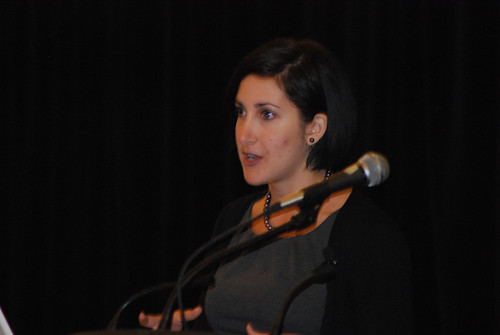Responding to Stevan Harnad, who writes of Jason Baird Jackson that he is "giving the wrong advice on Open Access, recommending a strategy that has not only been tried and has failed and been superseded already, but a strategy that, with some reflection, could have been seen to be wrong-headed without even having to be tried:
I made this decision deliberately, and accepted the unquestionable impact it had on my career, because I am unwilling to support an industry that makes its money by denying people access to scientific and academic literature, literature that the people have already paid for and which they ought, for many reasons, to be in full possession.
I have also lobbied my own institutions (the National Research Council of Canada) and funders to adopt OA mandates. It's not an either-or. You can do both, My lobbying has not suffered for my decision to publish (mostly) in open access form on my own website. Only my career has.
I understand and accept the position of some that it is faster and more economical to work with existing publishers in an effort to convince them to (eventually) allow scientific material to be posted in institutional archives. Not everyone is in the same position that I'm in, nor of the same mindset.
But to suggest the strategy I have adopted "has not only been tried and has failed and been superseded already, but a strategy that, with some reflection, could have been seen to be wrong-headed without even having to be tried" is, as the other commenter wrote, churlish.
My strategy has not failed. Instead, it has led me to an alternative, a remarkable, interesting and different kind of career as an academic. Yes, if you're just trying to do more of the same, the alternative route may be seen as a failure. But if you are looking to engage with the full possibilities of online and open online access, then liaison with the publishers is a millstone.
I fully accept the fact that many, or most, academics do not wish to embrace this sort of open access. I would ask that those of us who have be respected as advocating a genuine form of open access, and not proponents of a mistake.
- Choose not to submit scholarly journal articles or other works to publications owned by for-profit firms.
- Say no, when asked to undertake peer-review work on a book or article manuscript that has been submitted for publication by a for-profit publisher or a journal under the control of a commercial publisher.
- Do not seek or accept the editorship of a journal owned or under the control of a commercial publisher.
- Do not take on the role of series editor for a book series being published by a for-profit publisher.
- Turn down invitations to join the editorial boards of commercially published journals or book series."
I made this decision deliberately, and accepted the unquestionable impact it had on my career, because I am unwilling to support an industry that makes its money by denying people access to scientific and academic literature, literature that the people have already paid for and which they ought, for many reasons, to be in full possession.
I have also lobbied my own institutions (the National Research Council of Canada) and funders to adopt OA mandates. It's not an either-or. You can do both, My lobbying has not suffered for my decision to publish (mostly) in open access form on my own website. Only my career has.
I understand and accept the position of some that it is faster and more economical to work with existing publishers in an effort to convince them to (eventually) allow scientific material to be posted in institutional archives. Not everyone is in the same position that I'm in, nor of the same mindset.
But to suggest the strategy I have adopted "has not only been tried and has failed and been superseded already, but a strategy that, with some reflection, could have been seen to be wrong-headed without even having to be tried" is, as the other commenter wrote, churlish.
My strategy has not failed. Instead, it has led me to an alternative, a remarkable, interesting and different kind of career as an academic. Yes, if you're just trying to do more of the same, the alternative route may be seen as a failure. But if you are looking to engage with the full possibilities of online and open online access, then liaison with the publishers is a millstone.
I fully accept the fact that many, or most, academics do not wish to embrace this sort of open access. I would ask that those of us who have be respected as advocating a genuine form of open access, and not proponents of a mistake.










